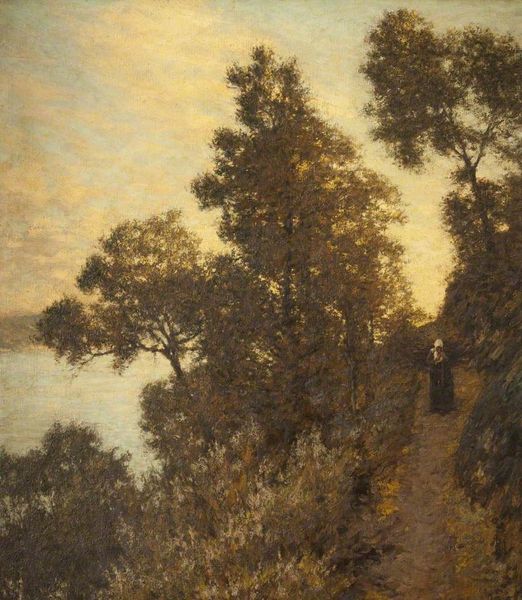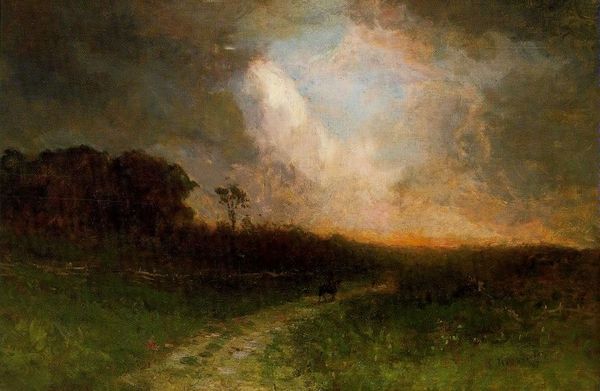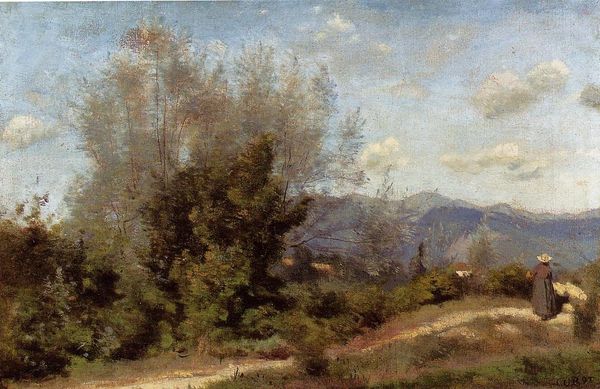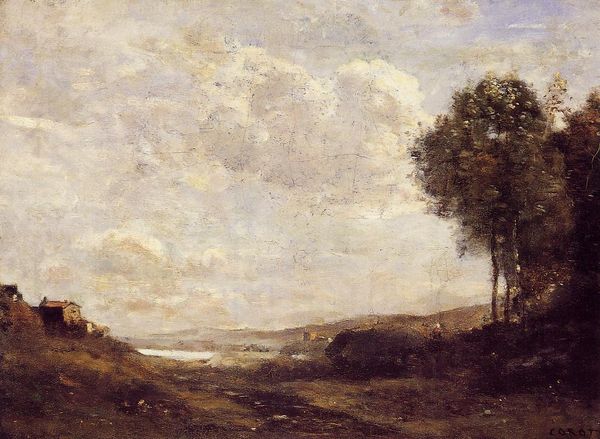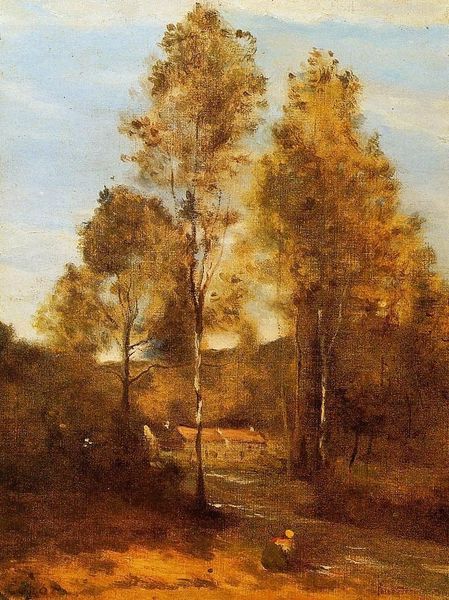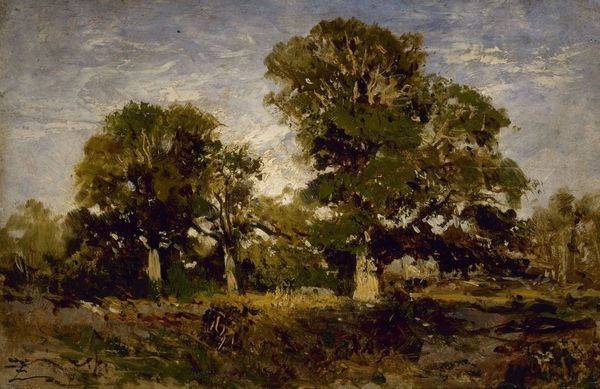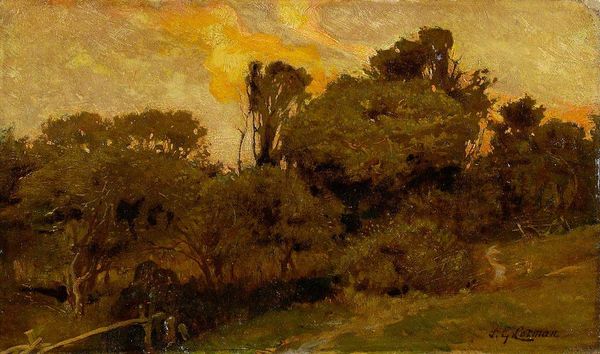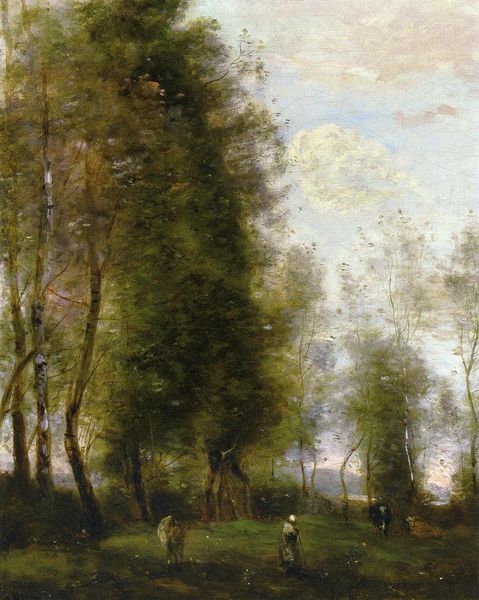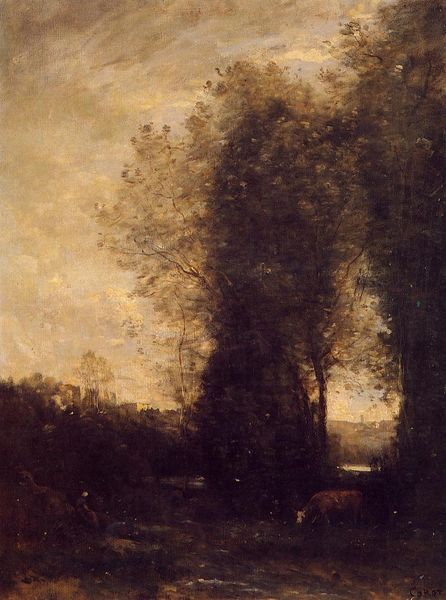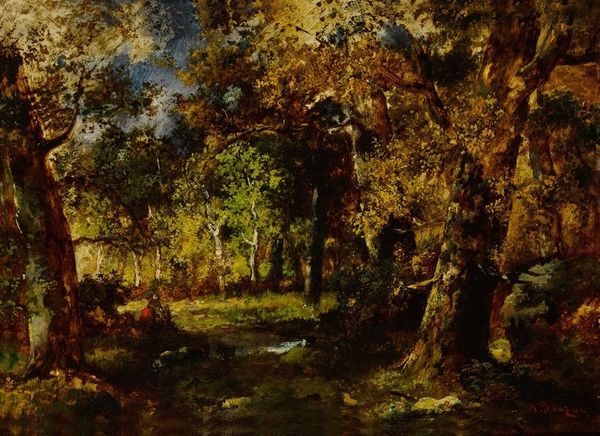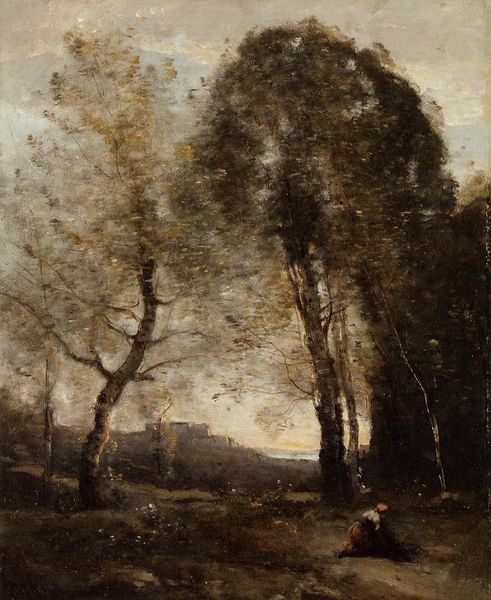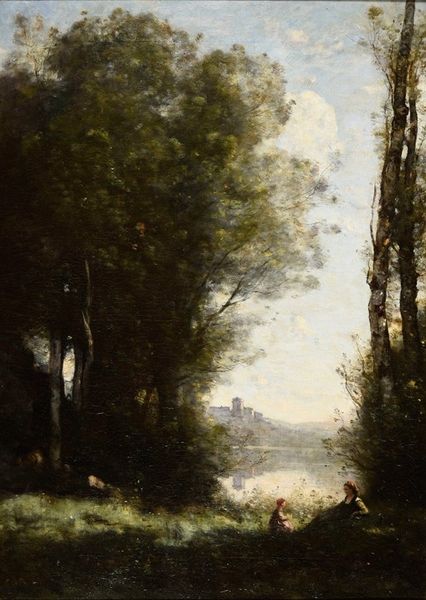
painting, plein-air
#
painting
#
impressionism
#
plein-air
#
landscape
Copyright: Public domain
Editor: We’re looking at "A Provençal Morning" by Henry Herbert La Thangue. It's a painting, looks like plein-air. I'm really drawn to the light and the textural brushstrokes but wondering how to dive in. What strikes you most when you look at this piece? Curator: Initially, the composition’s deliberate asymmetry compels observation. The verticality of the trees on the left offers a structural counterpoint to the expanse of the sky and the gentle recession of the landscape towards the right. Note how the light isn't just depicted, it's built up texturally with varied hues of impasto, almost tangible. Editor: I see what you mean, the thickness of the paint adds another layer. But what's the significance of the column in the middle? It almost feels out of place. Curator: The column serves as a crucial focal point. Structurally, it halts the leftward momentum created by the trees. Consider it semiotically: it represents the vestiges of a previous civilization, the historical sediment that constitutes the very ground on which the impressionistic moment unfolds. How does the placement of this 'ruin' play on foreground and background relations? Editor: Interesting. It is juxtaposed with nature. So the rough texture of the column mimics the sky but in more muted colours. That balance must be the main message. Thank you for showing that. Curator: Precisely! La Thangue plays with material and visual language. We have touched upon not just representation, but the very essence of painting as object and idea.
Comments
No comments
Be the first to comment and join the conversation on the ultimate creative platform.
